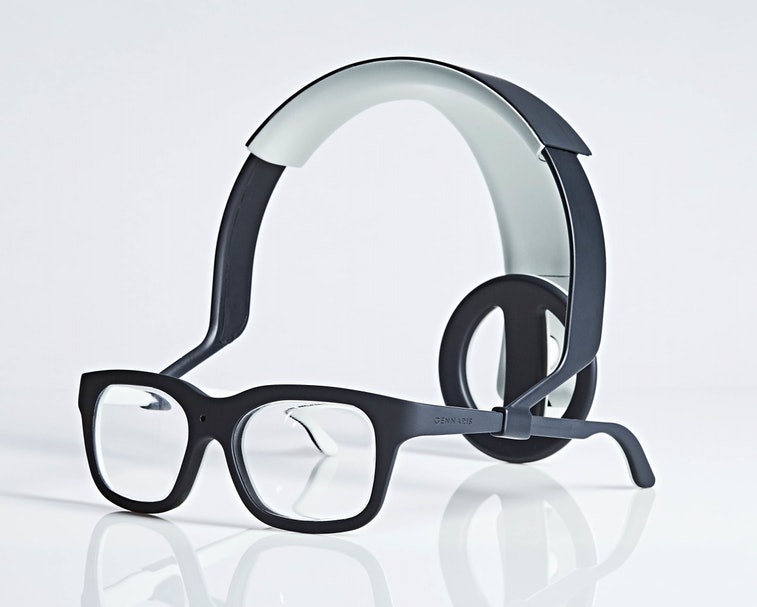Vision Worldwide
Artificial vision aids can provide needed assistance to a substantial amount of people. It is estimated by the International Agency for the Prevention of Blindness (IAPB) that there are 1.1 billion individuals worldwide who suffer from vision loss. They also report that 295 million of those individuals have moderate to severe vision impairment and that 43 million individuals are blind. While a number of these cases are treatable or can be prevented with proper access to medical care, some cases cannot.
For those who live with uncorrectable degrees of limited vision to no vision, different types of visual aids are commonly used. Very common types of visual aids include anything from a cane to a guide dog. Some devices, like handheld magnifying glasses or video monitors used for magnification are intended to simply supersize a text or image to make it easier to read. In other cases, some devices actually facilitate different versions of artificial vision. In the following sections we will explore some of these methods and devices for facilitating artificial vision.
Artificial Vision Aids: Bionic Eyes
Argus II
Bionic eyes are not relegated to being a thing of the future or the stuff of science fiction for much longer—they already exist and help people daily. As of 2019, the FDA had approved a bionic eye which was the Argus II. The Argus II treats retinitis pigmentosa—a genetic disorder that results in the breakdown of the retina.
The Argus II is implemented by undergoing a surgical procedure and using some complementary tools. An array of electrodes must be inserted into the eye. The other components to the Argus II include a video camera and pair of glasses. The camera is mounted on the glasses. The video feed is then converted to electronic pulses that are transmitted to electrodes that have been implanted onto the retinas. This sends signals to the brain, which then can be interpreted by the patient. The Argus II is not capable of fully restoring one’s vision. Instead, it provides a rougher black and white image. It can, however, improve one’s perception and contrast. After the surgery, patients need to undergo therapy and extensive training to learn using the system and for the brain to adapt to the new sensory signals.
Gennaris Bionic Eye
The Monash Vision Group out of Monash University in Australia has been attempting to restore individuals’ visual capabilities. Their head-worn device works in conjunction with 10 implants that work to stimulate 43 points of the human visual cortex. The goal is to have the device function like a normal optic nerve. The headgear features a camera, wireless transmitter, and vision processor. These work with the electrode implants.
Like the Argus II, the camera sends signals to the processor where it is transmitted to the implants. The implants stimulate the brain to create patterns. This is to provide the user with a type of vision that will allow them to better navigate their environment.

What the wearable headgear for the Gennaris vision system looks like. Courtesy of Input Magazine.
The vision system has proven successful in animals, and as of September 2020 human trials were soon anticipated. The team also reports no negative health effects as a result of using the Gennaris Bionic Eye or having the implant procedure. Their team is also interested in how the implant usage could be broadened and could potentially help those with spinal cord injuries and other medical and health conditions. The end goal for the Gennaris Bionic Eye is to make it commercially available.
Orcam My Eye
Orcam My Eye is one type of artificial vision device that was presented at the 2016 American Academy of Ophthalmology. It is a small device that attaches to the temple of eyeglasses. This makes it conveniently hands-free. Unlike the Argus II or the Gennaris system, the Orcam is noninvasive. The Orcam has a camera that recognizes information presented before it—for instance, text in a book, or someone’s face. It can also identify different products and the value of bills making shopping a much easier experience. The Orcam uses the camera and sensors to identify what is being “seen”. To use it, one simply taps on the Orcam to activate it. Then, through an earpiece, the Orcam reads or describes what is before the user.
In tests of the Orcam, legally blind people received a training session on the Orcam. They were instructed to complete tasks both with and without the Orcam, receiving points for successfully completed tasks. Without the Orcam, the study reported an average score of 2.5 out of 10. However, with the Orcam, the points scored increased dramatically to a 9.5 out of 10 and a 9.8 out of 10 after a week of using the device. The Orcam is compact, easy to use, and clearly helps visually assist the operator.
New Developments in Artificial Vision Aids
Dr. PingAn Hu and Dr. Richard Fu from the Harbin Institute and Northumbria (respectively) have created a way to control artificial synaptic devices. These synaptic devices are used in medical devices like bionic retinas and visual protheses.
By doping molybdenum disulphide with indium, electrical conductivity was improved. This reduces the power consumption of the optical synaptic devices. It is reported that the synaptic devices were tested with an electronic retina. The testing showed that the necessary image sensing functions were produced using their technology, indicating that the doped material could be a more efficient and effective alternative.
Conclusion
Major strides are being made in the area of artificial vision aids, opening the door to exciting new possibilities. Once the technology becomes approved, however, the problem then becomes sourcing funding and providing access to care and treatment options.
If you liked this article, you might also be interested in our latest blog post on Neuralink Capabilities, where we discuss not only the latest developments in the frontier of the brain-to-computer interface technology but also their capabilities and potential applications from transforming healthcare to enhancing cognitive abilities.
